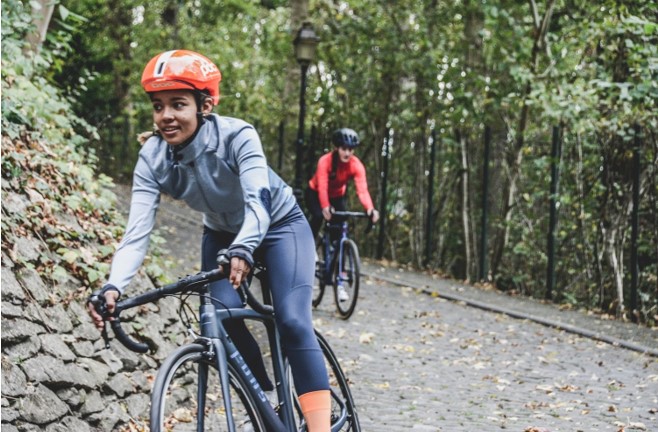Cycling is a healthy sport and exercise combined in one. It is a low-impact form of activity that is perfect for all ages; as long as you know how to bike, you are good to go. It increases strength, stamina, and aerobic fitness while providing a convenient means of transportation. Additionally, you also get to help the environment be healthy at the same time as you are (read more). There isn’t really a downside to biking, and millions of people love the endeavor for this very reason.
Cycling is an activity that provides an overall form of workout—the reason why it is a part of many triathlons worldwide. The 24.8-mile biking part is the longest segment of the three basic components of triathlon (i.e. swimming and running). Many people pour their hearts out and spend weeks of intense training for the multi-sport race.
Even if you are not training for the sport, there is no perfect time to revisit your love for cycling than today. Bring back those happy, golden days of your youth and rekindle your relationship with your mountain bike. Here are a few basic guidelines to start cycling again towards the road of health and wellness.
- Find the right bike

Now that you have grown, you realized that there is so much more to biking than pedaling aimlessly. You cannot just hop on the bike in shorts and slippers and go about your exercise. If you want to take cycling as a workout, first you need to find the right bike to suit your needs. It is not about the model and brand. Nor is it the latest and most expensive one. It is about how your body fits the bike you are going to use.
It is not much of a case if your bike is brand new or second hand. What’s important is its specifications such as the height and tilt of the seat, handlebar’s height, and the distance between the seat and the handles. You may not see its significance at first glance, but as time goes by, you will start to feel its unfitness in your knees, butt, and back.
The type of bike will only get to be considered once you level up your cycling workout into an advanced discipline level like cross-country and all-mountain cycling.
Professional bike fitting is available at most bike shops. It also does not cost much so you don’t need to worry about spending over your budget
- Safety first

As with all sports and exercise, safety should be your top priority. If you have any medical conditions, consult with your doctor first regarding your workout plans. After being medically cleared, the next step is to acquire safety-cycling gears. Protective riding gears include a helmet, gloves, cycling shoes, knee pads, and glasses.
Each gear is almost the same for every cycling discipline, save for the helmets. Of course, you can buy any helmet you want, but that would not be a cost-efficient move. Entry-level bikers can use the traditional road cycling helmets, which are light, comfortable, and with good airflow.
Other gears such as mountain biking helmets are designed to safeguard riders on a rough terrain course. Thus, having fewer air vents and covers most of the back and sides of the head. You can scour the internet for top mountain bike helmets to get the best deals.
Another safety and comfort consideration is your wardrobe of choice during workouts. It is important to wear proper clothing such as cycling or bib shorts and a base layer suit. Cycling shorts come with an added seat padding to avoid discomfort. A base layer suit is made of fine fabric with thermal controls and moisture management capabilities that can adjust to any weather conditions.
- Proper stretching
Stretching routines are important even in a low-impact exercise like biking. Especially for beginners, sudden muscular activity leads to muscle pain and cramps later on. To allow an enjoyable biking activity, do power stretches that focus on the main body muscles you are about to use.
You can do quad, hamstring, glutes (medius and maximus), and hip flexor stretches to wake your sleeping muscle fibers. These stretches will help you power up your pedaling and assume different aerodynamic positions without experiencing any pain. Establish a stretching routine before a cycling workout. This improves your flexibility, mobility, and reduces the risk of injury.
- Biking workout and routine

Start easy. You need to let your legs and lungs adjust to your cycling routine. For your first week, aim for an easy 20-minute ride that covers about five to eight miles. Ride at least thrice or four times a week to get your body acclimated to your cycling routine. Then start building your fitness by gradually adding a mileage into your routine.
Establish a steady pedaling rhythm instead of a pedal-coast pattern. Develop an average pedaling speed that is neither too fast nor too slow. You can use a tracker or a cycling power meter to check your pedaling pace, which should be at 80 to 90 strokes per minute. If you want to get serious about cycling, there are plenty of training tools available. Having the proper tools will help you reach your full cycling potential.
Choose routes with long, open roads to avoid traffic jams and stop lights. Avoid adventurous paths for now. Rest is also important to include in your cycling routine. Allow your body to recover and power up by consuming water or energy drinks and nutrition bars.
After weeks of building your routine, you can now increase your speed, time, and distance. Try incorporating burst speeds and 30-second quick accelerations into your rides. This increases your cardiovascular fitness and overall endurance.
- Establish road biking etiquettes
According to this website (https://www.theguardian.com/commentisfree/2016/jun/11/cycling-on-roads-dangerous-drivers-kalamazoo-michigan), biking into busy roads is a dangerous option for cycling beginners. The traffic, cars, and people can get a bit overwhelming and hinder you from establishing a good routine. But if there are no other choices, here are some tips to ensure a safe and smooth ride.
- Wear reflective clothing or install reflectors into your tires.
- Shift gears just BEFORE you need to. Hit those brakes BEFORE a curb or corner and not in it. You also need to ease into the brakes and avoid clenching it hard and fast.
- Use hand signals to communicate with fellow riders and drivers.











